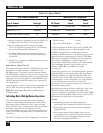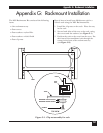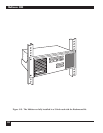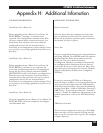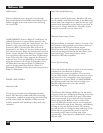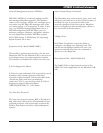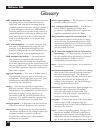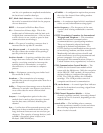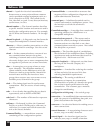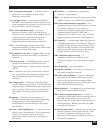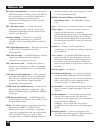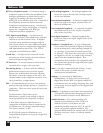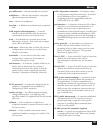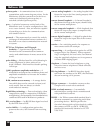
Glossary
253
one bit, as in quadrature amplitude modulation,
the baud rate is smaller than bps.
BCC, block check character — A character added to
the end of a transmission block for the purpose
of error detection.
BERT — Acronym for Bit Error Rate Tester.
bit — Contraction of binary digit. This is the
smallest unit of information and the basic unit
in digital data communications. A bit can have
a value of zero or one (mark or space in data-
communications terminology).
block — The part of a stacking connector that is
mounted on the top side of a module.
bps, bits per second — A standard for measuring
the rate of data; the number of bits passing a
specific point each second.
break or <break> — A spacing condition that exists
longer than one character time. Break is often
used by a receiving terminal to interrupt the
sending device’s transmission, to request a
disconnection, or to terminate a computer
process.
bridge — Equipment connecting two similar local
area networks (LANs).
broadcast — The transmission of a message
intended for general reception rather than for a
specific station.
buffer — Temporary data storage area to absorb the
difference in transfer rates between two devices,
or to collect data for more efficient block
transferral.
busyout — A configuration option in the voice
module that is used to place the voice channel
into the busy state, effectively disabling the
channel.
byte — A collection of bits operated upon as a unit.
Most bytes in data communications are 8 bits
long, and most characters sets use one byte per
character. The capacity of storage devices (such
as RAM) is frequently given in bytes or in
kilobytes (1KB=1024 bytes).
call inhibit — A configuration option that prevents
the voice/fax channel from calling another
voice/fax channel.
carrier — A continuous signal which is modulated
with a second, information-carrying signal.
carrier frequency — The frequency of the wave
(carrier) that is being modulated to transmit
signals.
CCITT, Consultative Committee for International
Telegraph and Telephone — This committee
makes international communications
recommendations to participating members.
These are frequently adopted and made
standards by national organizations. The
CCITT develops recommendations that pertain
to interfacing, modems, and data networks.
Membership includes various scientific and
trade associations, as well as governmental and
private companies. It is a part of the
International Telecommunications Union (a
United Nations treaty organization) in Geneva.
CCM, Communications Control Module — The
CCM is the six-channel base module which
comes with the Multiserver. With the exception
of the 56K CSU/DSU module, all interconnect
and mux links are configured through the
CCM. The CCM also houses the CommPak
cartridge. The CCM provides control of
composite and channel communication.
CD, carrier detect — A control signal that indicates
that the local modem is receiving a signal from
the remote modem.
CEM, Channel Expansion Module — A data
channel expansion module, increasing channel
capacity by 6 or 12 channels, depending on the
module chosen.
central office — The building where common
carriers terminate customer circuits and where
the switching equipment that interconnects
those circuits is located.




